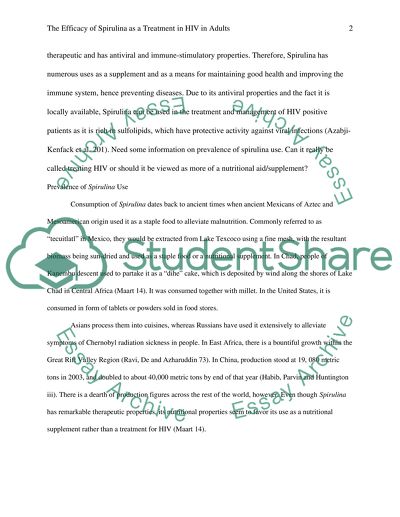Cite this document
(“The efficacy of Spirulina as a treatment for HIV in adult Research Paper”, n.d.)
Retrieved from https://studentshare.org/health-sciences-medicine/1467611-the-efficacy-of-spirulina-as-a-treatment-for-hiv
Retrieved from https://studentshare.org/health-sciences-medicine/1467611-the-efficacy-of-spirulina-as-a-treatment-for-hiv
(The Efficacy of Spirulina As a Treatment for HIV in Adult Research Paper)
https://studentshare.org/health-sciences-medicine/1467611-the-efficacy-of-spirulina-as-a-treatment-for-hiv.
https://studentshare.org/health-sciences-medicine/1467611-the-efficacy-of-spirulina-as-a-treatment-for-hiv.
“The Efficacy of Spirulina As a Treatment for HIV in Adult Research Paper”, n.d. https://studentshare.org/health-sciences-medicine/1467611-the-efficacy-of-spirulina-as-a-treatment-for-hiv.


